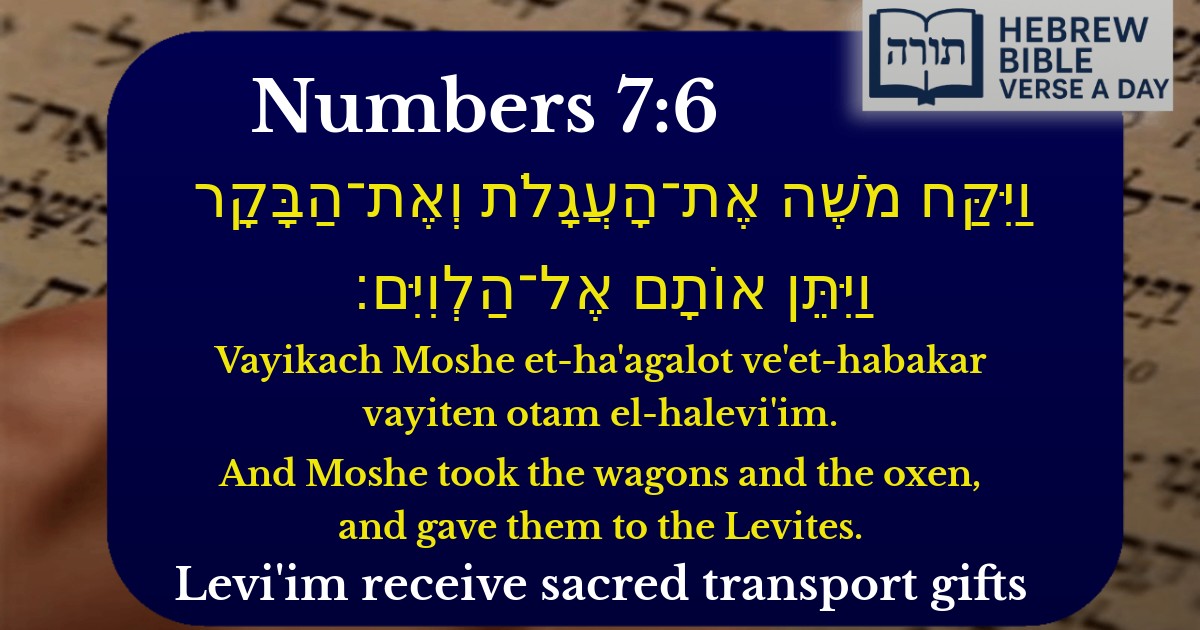Join Our Newsletter To Be Informed When New Videos Are Posted
Join the thousands of fellow Studends who rely on our videos to learn how to read the bible in Hebrew for free!
Hebrew Text
וַיִּקַּח מֹשֶׁה אֶת־הָעֲגָלֹת וְאֶת־הַבָּקָר וַיִּתֵּן אוֹתָם אֶל־הַלְוִיִּם׃
English Translation
And Moshe took the wagons and the oxen, and gave them to the Levites.
Transliteration
Vayikach Moshe et-ha'agalot ve'et-habakar vayiten otam el-halevi'im.
Hebrew Leining Text
וַיִּקַּ֣ח מֹשֶׁ֔ה אֶת־הָעֲגָלֹ֖ת וְאֶת־הַבָּקָ֑ר וַיִּתֵּ֥ן אוֹתָ֖ם אֶל־הַלְוִיִּֽם׃
Parasha Commentary
📚 Talmud Citations
This verse is quoted in the Talmud.
📖 Sotah 5a
The verse is referenced in a discussion about the dedication of the Levites and their service in the Tabernacle.
📖 Yoma 72b
Mentioned in the context of the responsibilities and duties of the Levites in the Temple service.


Context of the Verse
The verse (Bamidbar 7:6) describes Moshe receiving wagons and oxen from the Nesi'im (tribal leaders) and distributing them to the Levites for the transportation of the Mishkan (Tabernacle). This event occurs after the completion of the Mishkan's construction and its inauguration.
Rashi's Explanation
Rashi (Bamidbar 7:6) explains that the wagons and oxen were given specifically to the families of Gershon and Merari, who were responsible for transporting the heavier components of the Mishkan. The family of Kehas, however, did not receive wagons because they carried the sacred vessels (such as the Aron) on their shoulders, as commanded in Bamidbar 7:9.
Rambam's Perspective
In Hilchos Klei HaMikdash (3:8), the Rambam elaborates on the division of labor among the Levites, emphasizing that the Kehatites carried the most sacred items on their shoulders as a sign of honor and reverence, while the Gershonites and Merarites used wagons for the less sacred but bulkier materials.
Midrashic Insights
The Midrash (Bamidbar Rabbah 12:16) highlights the wisdom of Moshe in distributing the wagons. It notes that Moshe acted based on divine instruction, ensuring each Levite family received what was appropriate for their specific duties. This underscores the principle of hiddur mitzvah (beautifying the commandment) by assigning tasks according to the sanctity of the objects involved.
Practical Lessons